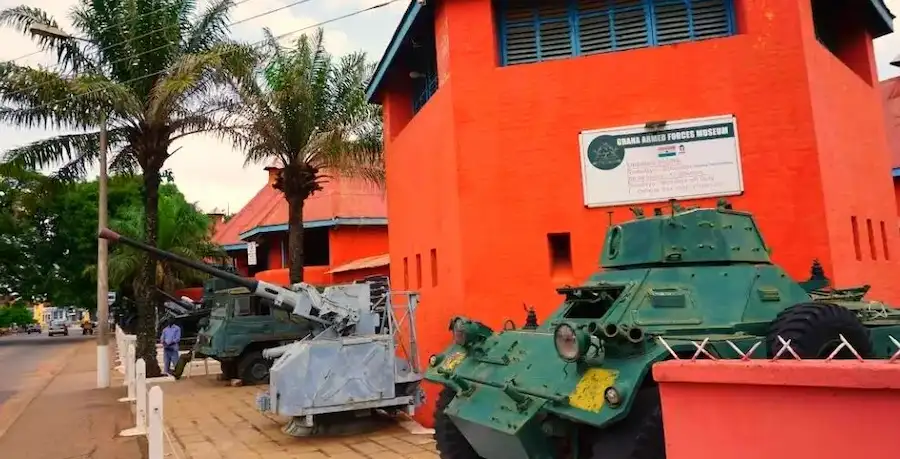The Armed Forces Museum furbished with intriguing military artefacts is amongst the prominent historical sites in Ghana. The military history was operational in 1953 at Kumasi, Ghana, and is a preferred tourist destination to most Ghanaians and foreigners. The military museum moves atop the ranks of the African sightseeing itinerary because of its beautiful setting and historical monuments that none would want to trade for anything.
Where is the museum located and why is it located there?
The military museum is located in the Uaddara Barracks in Kumasi, the capital city of the Ashanti Region of Ghana. It thus adds to the various historic sites like The Prempeh Museum, Kumasi Cultural Centre, Kumasi Zoo, and Kumasi Central Market which can all be visited while in Kumasi. Kumasi is a city in Ghana’s Ashanti Region and may not be populated busy and popular as compared to Accra; the country’s capital. The city however has a lot of overwhelming sightseeing itinerary worth trying.
What is a tour of the museum like?
A tour of the Armed Forces Museum can be exhausting and concurrently entertaining to any visitor. Apart from focusing on the history of the Asantes, the museum also deals with national history, paying tribute to Ghana’s various military branches(army, navy, air force) and commemorating their efforts in World Wars, and also the humanitarian services they rendered both in Africa and the world as a whole.
What’s the history behind the museum?
The military history focuses on the history of the Ashanti and retells it like never before. It specializes particularly in the conflicts between the Ashanti and the British. It is no doubt that the Ashanti State was one of the few African states to successfully defeat the powerful colonizers though the victories recorded were always short-lived.
The Kumasi Fort which now houses the military museum was built in 1820 by the Asantehene (the King of the Asante Kingdom), Osei Tutu Kwamina, to resemble the coastal forts that were built by European merchants. Kumasi Fort had to be rebuilt in 1897 after it was destroyed by British forces in 1874. The fort was built from granite and brown soil that was brought from Cape Coast to Kumasi by porters.
In March 1900, during the Asante Rebellion, the fort was encircled, and 29 Britons were trapped inside for several weeks. The leader of this rebellion was the Queen Mother of Ejisu, Ohemaa Yaa Asantewaa. After a brief period of imprisonment in the fort, she was forced into exile in the Seychelles, where she died.
From 1952 to 1953, after the Second World War, the Armed Forces of the British Colonial Government took over the fort and converted it into a museum.
What artifacts are showcased at the military museum?
Exhibits present at the military museum include:
- Military equipment, artifacts, and other objects used in the British-Asante War of 1990 and during the Second World War include weapons of war, colors, medals, armored cars, anti-aircraft guns, photographs, and portraits. This serves as a valuable historical institution for tracing the evolution and development of the Gold Coast Regiment of the colonial era, to the present-day Ghana Armed Forces
- Rooms that commemorate Ghana’s involvement in UN missions around Africa and the world. Known for their enormous support, participation, and assistance to outside humanitarian missions, the Ghana military forces have been engaged in installing peace in war-torn regions like Rwanda and Yugoslavia.
When does the museum open and how much is charged for a tour?
The Military Museum, Ghana opens daily from 8:00am to 5:00pm, except on Sundays and public holidays.
A guided tour of the fort costs GH¢ 5.00 per person.
If you’re therefore looking for a nice historical site to visit in Ghana, you should certainly put the Armed Forces Museum, Ghana on your consideration list.




